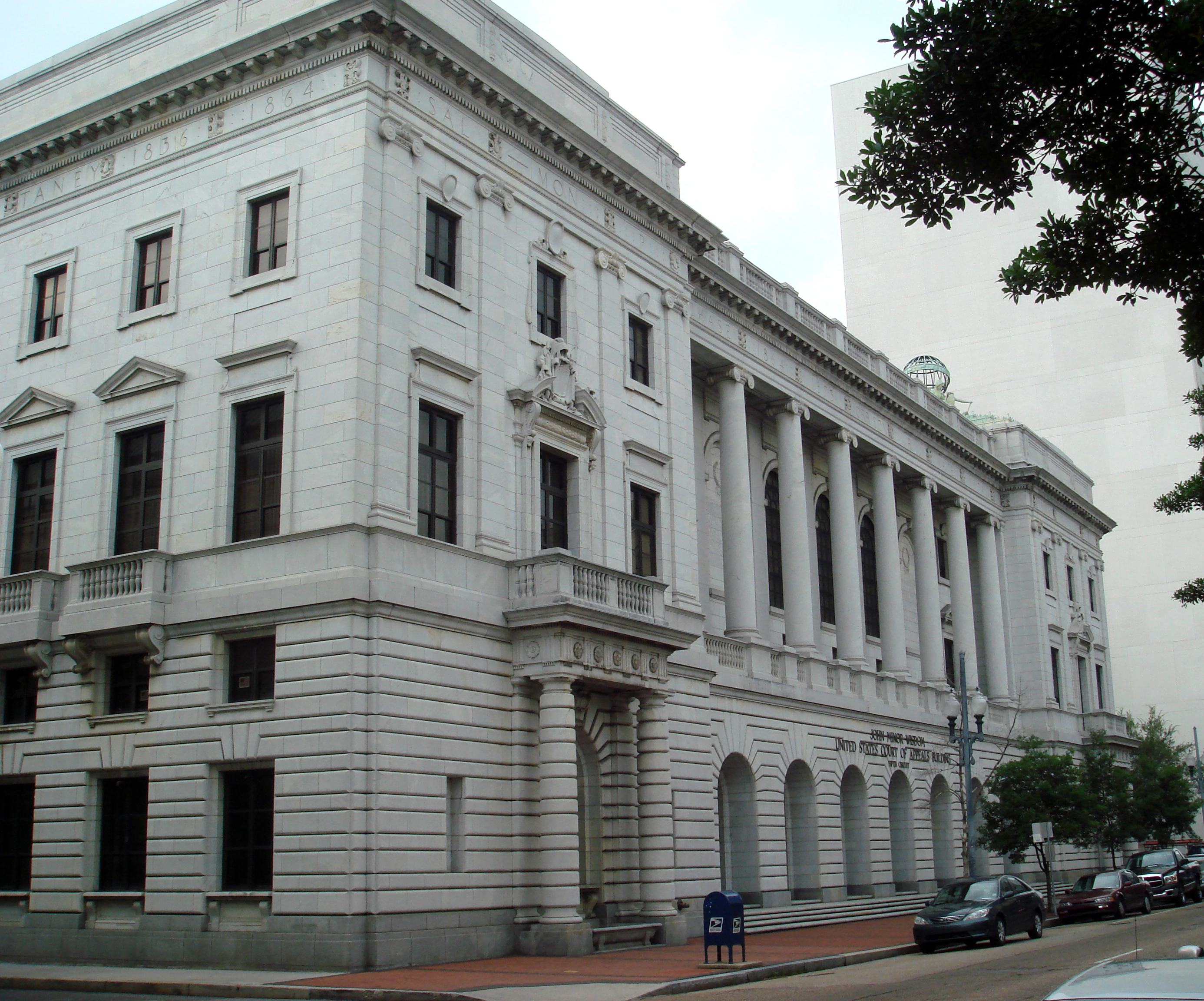Fifth Circuit Grants Preliminary Injunction Against AEA Tren de Aragua Removals
The three-judge panel found that the petitioners were likely to succeed on the merits because the AEA’s required predicates of declared war, invasion, or predatory incursion were not met based on the government’s facts.

Published by The Lawfare Institute
in Cooperation With

On Sept. 2, the U.S. Court of Appeals for the Fifth Circuit granted a preliminary injunction that halted removals based on President Trump’s March 14 proclamation, “Invocation of the Alien Enemies Act Regarding the Invasion of the United States by Tren de Aragua.”
The proclamation, which invoked the Alien Enemies Act (AEA), purported to authorize the removal of Venezuelan nationals alleged to be members of the transnational criminal organization, Tren de Aragua (TdA). The AEA was passed in 1798 during escalating tensions with France as one of the four Alien and Sedition Acts and remains the only one still in effect today. It authorizes the president, during wartime or in response to an “invasion or predatory incursion” by a foreign nation or government, to apprehend, restrain, and remove foreign nationals of the enemy country from the U.S.
A 2–1 majority of the panel, composed of Judges Leslie Southwick, Andrew Oldham, and Irma Ramirez, found that the petitioners, W.M.M. and A.R.P., two Venezuelan nationals detained under the AEA pursuant to the proclamation, were likely to succeed on the merits in challenging the proclamation because the AEA’s required predicates of war, invasion, or predatory incursion were not met based on the facts presented by the government, and granted the preliminary injunction. A different 2–1 majority ruled against the petitioners on notice and due process, upholding the government’s pre-removal notice, which grants detainees seven days before removal could begin. The court remanded for further proceedings and limited the injunction to only those removals occurring under the AEA, as the government remains free to remove TdA members under other legal authorities.
Background and Procedural Posture
On April 16, two Venezuelan nationals, known as W.M.M. and A.R.P. in filings, detained at the Bluebonnet Detention Center in the Northern District of Texas filed habeas petitions claiming impending removal to El Salvador under the president’s proclamation. The proclamation had announced that the TdA is perpetrating, attempting, and threatening an invasion or predatory incursion on behalf of Venezuelan president Nicolas Maduro. The district court denied a temporary restraining order. Petitioners filed an emergency appeal, which the Fifth Circuit dismissed for lack of appellate jurisdiction. The Supreme Court granted temporary injunctive relief but remanded to the Fifth Circuit to address the preliminary injunction factors in full, including likelihood of success on the merits and whether the government’s pre-removal notice was an adequate exercise of due process.
Scope of Judicial Review
The court relied on Ludecke v. Watkins and the Supreme Court’s recent decision in Trump v. J.G.G. (JGG), to find that, although the president’s fact-finding in a proclamation is not reviewable, courts retain authority to “interpret” the AEA and apply it to the facts before it. The panel was therefore empowered to review whether the facts presented satisfied the definition of “invasion” or “predatory incursion” as required by the AEA to trigger its application.
Definition of “Invasion” and “Predatory Incursion”
Invasion
The panel looked to two dictionary definitions published close to the AEA’s enactment, combined with contemporaneous usage, such as James Madison’s discussion of invasion as “an operation of war” which occurred during the political struggle surrounding the passage of the AEA. The panel found that, under the AEA, “invasion” should be understood as an act of war involving entry by a military force of a foreign nation. The panel further found that the facts presented by the government were unlikely to meet this definition.
Predatory Incursion
The court looked to the usage of the phrase “predatory incursion” at the time of the AEA’s passing, such as dictionary definitions, a 1783 correspondence by Washington, and a 1797 public address by John Adams to Congress. Taken together, the panel found that the “predatory incursion” in the AEA referred to unauthorized entries by units of another nation’s army to inflict harm for the benefit of the intruding nation. Again, the panel found that the facts presented by the government were unlikely to satisfy this definition.
Although the court accepted the government’s arguments about the TdA engaging in mass illegal migration to the United States and using drug-trafficking as a weapon, it did not find that the government had provided facts showing that the TdA acted as armed military-like units or presented an invasion or incursion within the meaning of the statute.
Foreign Nation or Government
Although the court concluded there was no “invasion or predatory incursion,” and thus the AEA could not apply, it nevertheless held that the statute’s “foreign nation or government” requirement would have been satisfied. Accepting the president’s factual determination that the TdA is so closely intertwined with Venezuela’s Maduro regime as to constitute a “hybrid criminal state,” the court found “no principled difference between the President’s finding[s] . . . and what the AEA was written to address.” Drawing on historical examples such as the use of privateers or mercenaries, the court held that enemy forces need not belong to a nation’s regular military for the AEA to apply. Finally, it recognized President Trump’s choice to designate TdA and its members—rather than all Venezuelans as the statute contemplates—as a narrower, and therefore permissible, exercise of authority.
Remaining Preliminary-Injunction Factors
The court briefly addressed the remaining factors used in determining preliminary injunctions: likelihood of irreparable harm, the balance of equities tipping in the movant's favor, and public interest favoring the injunction. It found that because “the government has represented ‘that it is unable to provide for the return of an individual deported in error to a prison in El Salvador,’” the element of irreparable harm was met. The panel found that the final two factors were also met because “there is a public interest in preventing aliens from being wrongfully removed, particularly to countries where they are likely to face substantial harm.”
Pre-Removal Notice
The Supreme Court had instructed the government that AEA detainees must receive reasonable notice of removal, allowing them to seek habeas relief. The government issued a revised notice while the appeal was pending. The revised notice included information about detainees’ AEA status and TdA designation, advised of the proper federal court for a habeas claim, told recipients that a list of attorneys would be provided to them, and gave detainees seven days before removal could occur. Looking at the updated notice, the panel found that petitioners are unlikely to prevail on a due process challenge, given that hearings on removals had already successfully happened in much less time than the seven-day window. The court stressed, however, that this holding is based on an undeveloped record and may change after additional fact-finding.
Concurring Opinion by Judge Ramirez
Judge Ramirez concurred that a preliminary injunction was warranted based on the fact that the predicates of “invasion” and “predatory incursion” had not been met. She disagreed with the idea that seven days was an adequate period of reasonable notice and argued that Bluebonnet’s logistical hurdles meant that “even represented detainees…had difficulty meeting with counsel by video within seven days.” She further argued that scheduling requirements, facility transfers, poor prison mail service, funding cuts for legal resources, delays caused by mail service impacting the “mailbox rule” (a rule meaning that a pro se detainee’s federal habeas petition is treated as filed when the detainee delivers it to detention officials for mailing to the district court) and a lack of attorneys willing to work in this area of law on a low-cost rate, all made seven days a grossly insufficient period of time to satisfy due process requirements.
Dissenting Opinion by Judge Oldham
Judge Oldham filed a 130 page dissent, setting out a sharply different account of the AEA and the judiciary’s proper role in cases arising under it. His analysis concentrated on three areas: the extent of judicial review, the scope of the AEA’s coverage, and the adequacy of the government’s notice procedures. In each, he contrasted his interpretation with that of the majority, arguing that the panel had improperly inserted the judiciary into decisions historically entrusted to the political branches.
Reviewability
On the issue of judicial review, Judge Oldham emphasized that the AEA confers exceptionally broad discretion on the President and that courts have traditionally refrained from questioning how that discretion is exercised. He began by situating the statute in its historical context. Enacted in 1798 during the Quasi-War with France, the AEA was intended to give the executive the ability to respond to foreign threats quickly and decisively, without waiting for Congress to declare war. The statutory terms –“declared war,” “invasion,” and “predatory incursion” – were chosen to capture a range of external hostilities, some short of full-scale war, and to authorize the president to act immediately to remove nationals of the threatening power.
Judge Oldham argued that 200 years of Supreme Court precedent confirms this understanding. He placed particular weight on Martin v. Mott (1827), where the Supreme Court held that the President’s decision that exigent circumstances justified calling out the militia was conclusive upon all others. He also relied on The Prize Cases (1863), in which the Court accepted the president’s recognition of a state of war for purposes of enforcing a blockade, and Ludecke v. Watkins (1948), where the Court declined to review the president’s determination that hostilities with Germany had not ended for purposes of continuing detention under the AEA. Taken together, he contended, these cases demonstrate that determinations about whether hostilities rise to the level of “war,” “invasion,” or “incursion” are political judgments that courts have neither the competence nor the authority to second-guess.
Statutory Scope
In terms of the AEA’s scope, Judge Oldham stressed the breadth of the AEA’s operative language. Once the triggering condition is satisfied and the president issues a proclamation, “all natives, citizens, denizens, or subjects” of the hostile nation within the United States are subject to detention or removal. He pointed out that the AEA does not condition liability on individualized proof of hostility, participation in hostilities, or membership in an invading force. Instead, it operates collectively, reflecting the 18th-century law-of-nations view that the subjects of a hostile sovereign could be treated as alien enemies by virtue of their nationality. Oldham cited historical applications of the Act which applied it broadly to nationals of enemy states present in the United States.
Building on this reasoning, Oldham indicated—in apparent tension with the Supreme Court’s holding in JGG–that individuals accused of belonging to TdA are not entitled to hearings to contest that status. In his view, the proclamation is satisfied so long as the individuals are Venezuelan, making further inquiry into TdA membership unnecessary.
He contrasted this with the Alien Friends Act of 1798, which authorized removal of particular aliens deemed dangerous in peacetime but expired in 1800. According to Oldham, the existence of two statutes in 1798 demonstrates that Congress knew how to authorize individualized, danger-based removals (in the Friends Act) and how to authorize collective, nationality-based removals during times of conflict (in the Enemies Act). By narrowing the Act’s reach through its interpretation of “invasion” and “incursion,” Oldham argued, the majority effectively rewrote the statute to add limitations that Congress had never adopted.
Due Process and Notice Requirements
On procedural protections, Judge Oldham maintained that the government’s revised seven-day notice procedures were constitutionally sufficient. He noted that detainees were provided notice in their own language, a list of attorneys, and a period to prepare filings. He observed that many detainees had managed to file petitions within days, suggesting that access to courts was real and not illusory. In his view, due process in the alien enemy context requires only that detainees have a meaningful opportunity to challenge basic predicates, such as nationality and legal status, but does not entitle them to expanded procedural timelines or judicial oversight of executive logistics. He disagreed with Judge Ramirez’s separate concurrence that logistical barriers made seven days inadequate and thus a longer period was constitutionally required. For Judge Oldham, any procedural adjustments were matters for the political branches to address, not for the judiciary to impose.
Preliminary Injunction
Judge Oldham also addressed the preliminary injunction factors, which the panel had been directed to analyze. On the likelihood of success on the merits, he concluded that the petitioners were unlikely to prevail because their claim depended on judicial review of the president’s determination, which he considered unavailable under the statute and precedent. On irreparable harm, Oldham acknowledged that removal can sometimes be characterized as irreparable, but he argued that this factor could not outweigh the absence of a likelihood of success. On the balance of equities and public interest, he emphasized the weight owed to national security considerations. In his view, the Executive Branch is best positioned to assess foreign threats, and enjoining enforcement of the proclamation interfered with the President’s ability to discharge his constitutional duties. He concluded that the equities and public interest strongly favored the government. Overall, he found that none of the injunction factors supported relief and criticized the majority for reweighing them in a manner that elevated judicial skepticism of the president’s findings.
Separation of Powers
Throughout his dissent, Judge Oldham underscored concerns about separation of powers. He warned that the majority’s reasoning effectively created a judicial veto over presidential determinations in the realm of foreign affairs and national defense. In his account, the Constitution entrusts these judgments to the political branches, with the president acting as commander-in-chief and Congress exercising control through declarations of war, appropriations, or legislative amendment of the AEA itself. Judicial review of the kind employed by the majority, he argued, risks undermining the executive’s ability to act with the speed and decisiveness required in matters of national security. He described the judiciary’s role as limited to ensuring that individuals fall within the categories identified by the president and the statute, not to reevaluating the President’s characterization of external threats.
Judge Oldham’s dissent presented the AEA as a statute that grants the president expansive and largely unreviewable authority once a proclamation is issued. He argued that the judiciary’s role is restricted to confirming simple factual matters such as nationality and age, while the political branches bear responsibility for determining whether an invasion or incursion has occurred and how broadly to exercise removal authority. He viewed the notice procedures adopted by the government as adequate and cautioned that further judicial intervention would upset the constitutional balance. His opinion thus framed the majority’s approach as a significant departure from both the text of the statute and longstanding precedent, with implications for the separation of powers in the national security context.






